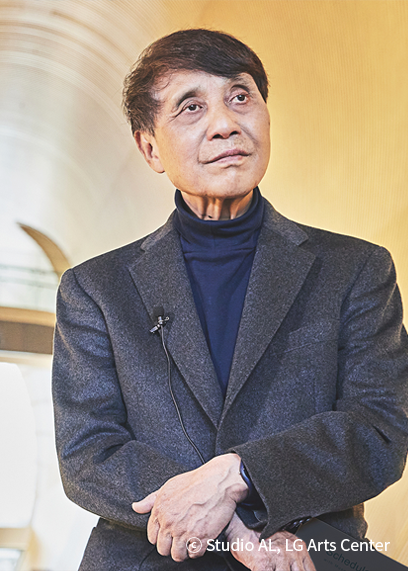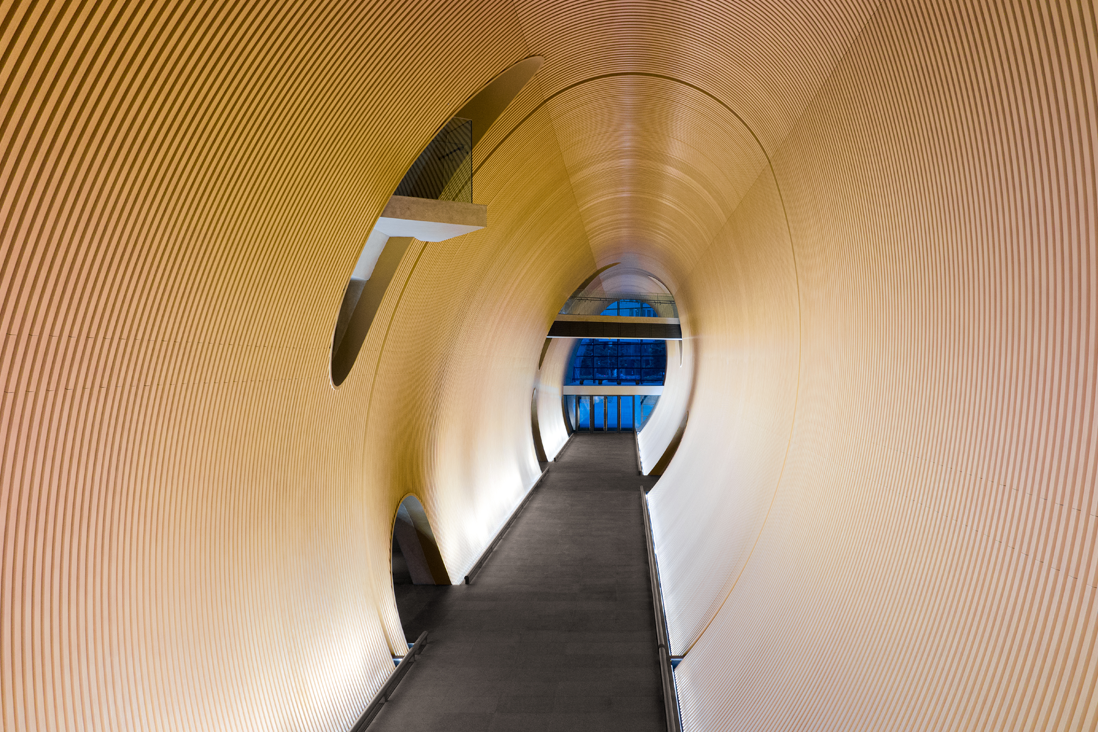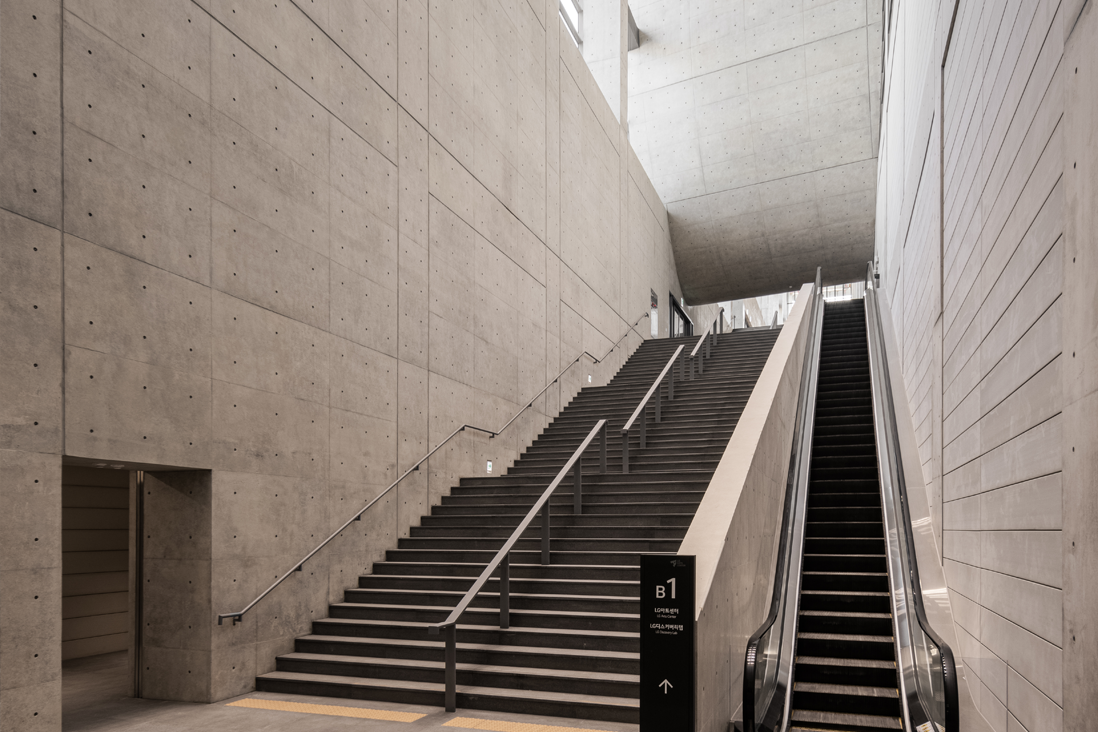
ArchitectTadao Ando
Tadao Ando (b. 1941) is an architect who takes transparent materials such as glass and exposed concrete to create a concise, simple, yet strong presence. He is a world-famous master in architecture, a laureate of the 1995 Pritzker Architecture Prize.
His most renowned works include 'Chapel on the Water', 'Church of Light', and 'Naoshima Contemporary Art Museum'. In Korea, his works include 'Museum SAN', 'the Bonte Museum', and 'Glass House'.
My wish was to create the one and only performing arts center,
where the lobby, the atrium, and the passage each have visibly distinctive features as a space of their own.
I hope it will become a space that makes the hearts of visiting audiences beat.

Concept
The design of the LG Arts Center fully reflects the architectural philosophy of Tadao Ando,
which is to let nature blend into the architecture.
The design is based on three concepts: TUBE, STEP ATRIUM, and GATE ARC




